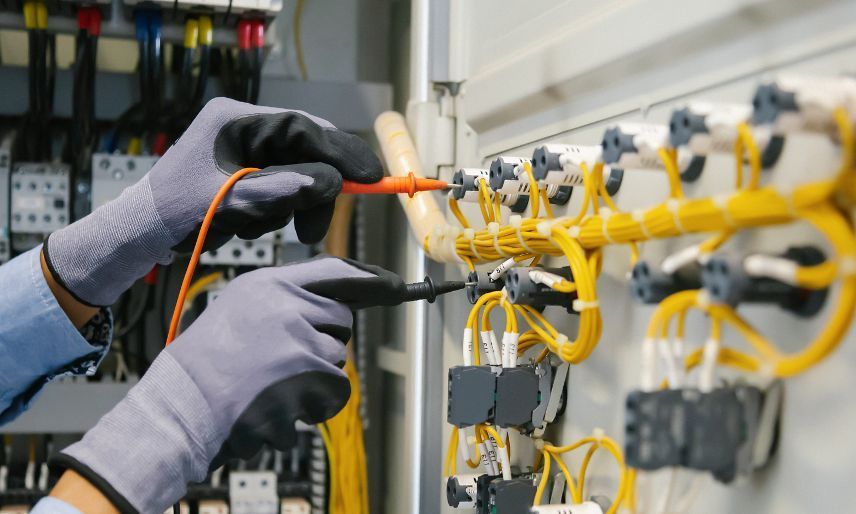Why Are Insurance Rates Increasing for Electricians Each Year?

The world of electrical work is a vital component of modern life, yet it comes with its unique set of risks and liabilities. As a result, insurance is a necessary investment for electricians. However, many professionals in the field have noticed a continual increase in their insurance premiums year after year. This article delves into the various factors that contribute to this rising trend, exploring how they affect insurance rates specifically for electricians.
Understanding the Basics of Insurance for Electricians
Insurance plays a critical role in the electrical industry by providing financial protection against various risks including accidents, property damage, and liability claims. Electricians often encounter hazardous situations while working with electrical systems, making adequate coverage essential for their safety and financial security.
Generally, insurance policies for electricians can include general liability insurance, workers' compensation, and professional liability insurance. Each of these serves different purposes and is essential to mitigate risks associated with electrical work. General liability insurance protects against third-party claims for bodily injury or property damage, while workers' compensation covers medical expenses and lost wages for employees injured on the job. Professional liability insurance, on the other hand, safeguards electricians against claims of negligence or failure to deliver professional services as promised, which can be particularly relevant in cases involving complex electrical systems.
The Role of Insurance in the Electrical Industry
The electrical industry involves substantial risks due to the nature of the work. If a technician inadvertently causes a fire or property damage, the financial repercussions could be significant. Insurance serves as a safety net, covering legal fees and compensation claims, thus protecting electricians and their businesses. In addition to financial protection, insurance can also provide access to resources that help electricians improve their safety practices, such as training programs and safety audits, which can further reduce the likelihood of accidents and claims.
Furthermore, having insurance helps electricians build trust with clients. Customers often prefer hiring insured electricians, as it demonstrates professionalism and reliability, ensuring that both parties are protected in case of any unfortunate incidents. This trust can translate into more business opportunities, as satisfied clients are likely to recommend insured electricians to others. Moreover, many construction projects require contractors to carry specific types of insurance, making it a necessity for electricians who wish to work in competitive environments. By being insured, electricians not only protect themselves but also enhance their reputation in the industry.
Key Factors that Determine Insurance Rates for Electricians
Several factors contribute to how insurance rates are calculated for electricians. Some of the most important include:
- Location: Different regions have different risks associated with electrical work, impacting the policy rates significantly.
- Experience: Newly qualified electricians may face higher premiums compared to those with years of experience.
- Claims History: A history of claims against an electrician can lead to increased rates.
- Type of Work: Specializing in high-risk services, such as working on commercial or industrial projects, can also affect rates.
- Coverage Level: The extent of coverage desired by an electrician directly influences the cost of their insurance premiums.
In addition to these factors, the size of the business can also play a significant role in determining insurance costs. Larger companies with more employees and higher revenue may face different underwriting criteria compared to sole proprietors. Additionally, the specific equipment and tools used in electrical work can impact rates; for instance, electricians who use specialized machinery may need additional coverage to protect against equipment failure or damage. Understanding these nuances can help electricians make informed decisions about their insurance needs and find the right balance between adequate coverage and affordability.
The Rising Trend of Insurance Rates for Electricians
Over the last several years, insurance rates for electricians have been on the rise. This trend has raised concerns among many in the industry about the sustainability of their businesses and affordability of necessary coverage.
Yearly Analysis of Insurance Rate Increases
Annual reports indicate that many electricians have experienced an average increase of 5% to 15% in their premiums over the past decade. These escalating costs often seem disproportionate compared to the inflation rate or general economic growth, exacerbating financial concerns for many in the trade.
Such increases can be attributed to various factors, including rising costs of materials, increased claims, and overall financial pressures facing the insurance industry. Insurers must maintain profitability, leading them to adjust premiums periodically. Furthermore, the growing complexity of electrical systems and the introduction of new technologies can also contribute to higher risks and, consequently, higher premiums. Electricians must stay updated with the latest safety standards and regulations, which can further strain their financial resources.
Comparing Insurance Rate Increases for Electricians vs Other Trades
When compared to other trades, electricians frequently experience steeper insurance premium increases. While all trades face risks and potential liabilities, the nature of electrical work — often considered high-risk — leads to a greater frequency of claims and damages.
Additionally, industries such as plumbing or HVAC may have lower claim rates, allowing their premiums to remain relatively stable. As a result, electricians may find themselves at a disadvantage when it comes to insurance affordability compared to peers in related trades. This disparity can lead to a ripple effect, where electricians may feel compelled to cut corners or reduce coverage to manage costs, potentially putting their businesses and clients at risk. Moreover, as the demand for skilled electricians continues to rise with the increasing adoption of renewable energy sources and smart home technologies, the need for comprehensive insurance becomes even more critical, creating a paradox where the need for coverage grows while the ability to afford it diminishes.
The Impact of Technological Advancements on Insurance Rates
Technological advancements in the electrical field have a dual impact on the insurance landscape. On one hand, new and improved equipment can reduce hazards and risks associated with electrical work, potentially lowering premiums. However, on the other hand, these advancements can introduce new complexities that heighten risk, affecting insurance costs negatively.
How New Electrical Equipment and Techniques Influence Insurance Costs
Innovations such as automated technologies, smart home systems, and energy-efficient installations have transformed the electrical industry. While these advancements increase efficiency, they can also introduce new risks that insurers must account for, leading to altered risk assessments and higher premiums.
Furthermore, as electricians adopt more advanced equipment, they may become liable for new types of damages or failures, creating an increased likelihood of more significant claims in the future. This evolution contributes to the rising costs associated with insurance coverage. For instance, the integration of smart technology can lead to complexities in system failures that are not only difficult to diagnose but also expensive to rectify, thereby increasing the potential for claims. Additionally, the rapid pace of technological change means that electricians must continually update their skills and knowledge, which can also contribute to higher operational costs that may be reflected in their insurance premiums.
The Risk Factor: Evaluating Safety in the Electrical Industry
Another critical aspect influencing insurance rates is safety in the electrical industry. Insurers closely evaluate the safety measures implemented by electricians. Those who prioritize safety protocols, including proper training and compliance with regulations, may benefit from lower insurance rates.
Conversely, electricians working in environments that lack effective safety measures may face higher premiums as insurers deem them to be at increased risk for accidents. Therefore, cultivating a culture of safety is not just a regulatory necessity but an economic imperative for reducing insurance costs. Moreover, the implementation of advanced safety technologies, such as real-time monitoring systems and predictive analytics, can further enhance safety measures. These technologies not only help in preventing accidents but also provide insurers with valuable data to assess risk more accurately, potentially leading to more favorable insurance terms for those who adopt them. As the industry evolves, the emphasis on safety and technological integration will likely play a pivotal role in shaping future insurance landscapes.
The Role of Regulatory Changes in Insurance Rate Hikes
Regulatory changes significantly impact insurance costs for electricians. As standards and regulations evolve to enhance safety and quality within the electrical industry, they can incur additional costs that affect premium rates.
Understanding the Impact of Government Policies on Insurance Rates
IGovernment policies aimed at increasing safety standards can contribute indirectly to rising insurance rates. New requirements may necessitate additional training or certifications for electricians, which, while beneficial for safety, can increase operational costs. These increased costs may subsequently lead to higher insurance premiums as businesses try to maintain their profitability.
Additionally, government interventions in the insurance industry, such as enforcing stricter regulations on insurers, can also lead to increased operational costs for insurance companies, which they typically pass on to the insured in the form of higher premiums. This cycle of regulatory change and rising costs can create a challenging environment for electricians, especially small businesses that may struggle to absorb these additional expenses.
Moreover, the financial implications of these regulatory changes often extend beyond just insurance premiums. Electricians may find themselves needing to invest in new equipment or technology to comply with updated standards, further straining their budgets. The cumulative effect of these changes can lead to a reevaluation of business strategies, prompting some electricians to seek out more cost-effective solutions or even reconsider their service offerings.
The Effect of Industry Standards and Regulations on Insurance Costs
Electrical industry standards dictate much of how insurance is structured. Changes in these standards often lead to reassessments of risk, prompting insurers to adjust rates. As the National Electrical Code (NEC) and other regulatory bodies refine their standards, the insurance landscape must adapt to ensure that all parties are compliant and protected.
Electricians need to stay informed about industry regulations not only for legal compliance but also to understand how these changes may directly affect their insurance premiums moving forward. Keeping abreast of updates can empower electricians to make informed decisions about their insurance needs and potentially mitigate the impact of rising costs. Additionally, engaging with industry associations can provide valuable resources and insights into best practices for navigating these regulatory landscapes.
Furthermore, the evolving nature of technology in the electrical field introduces new challenges and opportunities in terms of compliance and insurance. As electricians adopt innovative solutions such as smart home technology and renewable energy systems, they may find that existing insurance policies do not adequately cover these new services. This necessitates ongoing dialogue with insurers to ensure that coverage remains relevant and comprehensive, which can also influence overall costs. The interplay between technological advancements and regulatory changes represents a dynamic aspect of the insurance landscape that electricians must navigate carefully.
Future Predictions for Electricians' Insurance Rates
As trends in insurance continue to evolve, many electricians are keen to understand what the future holds for their insurance costs. Several indicators suggest that while certain improvements can be expected, challenges will also persist.
Projected Insurance Rate Trends for the Electrical Industry
Market analysts predict that insurance rates for electricians may stabilize in the coming years as the industry adapts to changing technologies and safety protocols. However, potential economic instability and rising claims could counterbalance any anticipated reduction in rates.
Furthermore, as insurers increasingly utilize data and analytics to assess risk, premiums may become more personalized, allowing for more competitive pricing in some cases while still reflecting individual risk levels. This shift toward data-driven pricing models means that electricians who maintain a strong safety record and invest in advanced training may find themselves benefiting from lower premiums, while those with a history of claims could see their rates rise significantly.
Preparing for Future Insurance Costs as an Electrician
Understanding the complex factors that influence insurance rates is essential for electricians. Looking ahead, electricians can take proactive steps to mitigate potential increases in insurance premiums, including:
- Investing in risk management and safety training.
- Regularly reviewing and updating their coverage options.
- Staying informed about industry standards and regulations.
- Establishing relationships with multiple insurance providers to explore competitive rates.
By adopting these measures, electricians can better prepare for the challenges posed by rising insurance rates while ensuring their business remains protected and viable in the long term. Additionally, embracing new technologies such as smart tools and automated systems can enhance operational efficiency and reduce the likelihood of accidents, further contributing to a favorable insurance profile. Electricians should also consider joining professional organizations that offer resources and support for navigating insurance complexities, as these networks can provide valuable insights and collective bargaining power when negotiating terms with insurers.
Moreover, as the electrical industry evolves with the integration of renewable energy solutions and smart home technologies, electricians may find new opportunities to diversify their services. This diversification not only opens up additional revenue streams but can also positively impact insurance rates by demonstrating a commitment to innovation and risk management. By positioning themselves at the forefront of industry advancements, electricians can not only safeguard their financial interests but also enhance their reputation and marketability in an increasingly competitive landscape.



